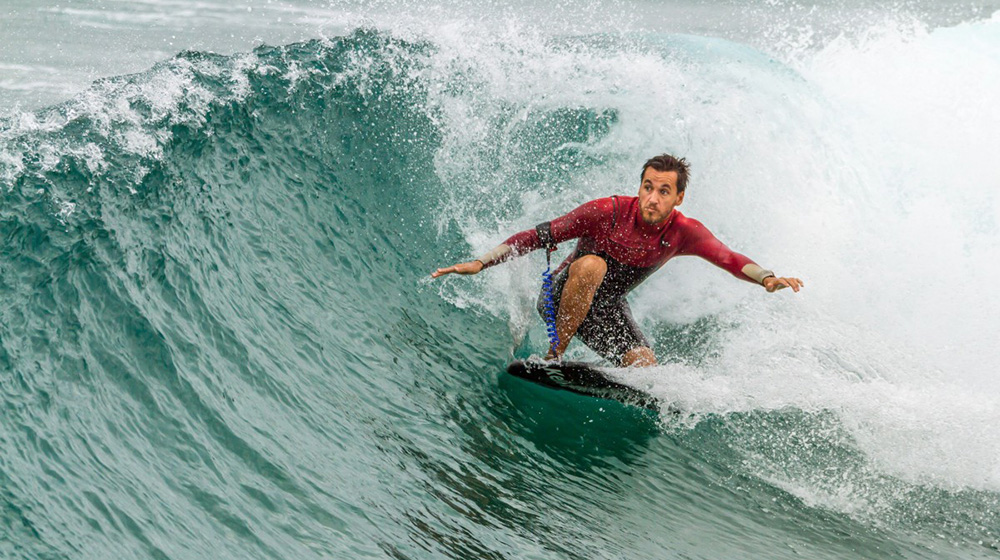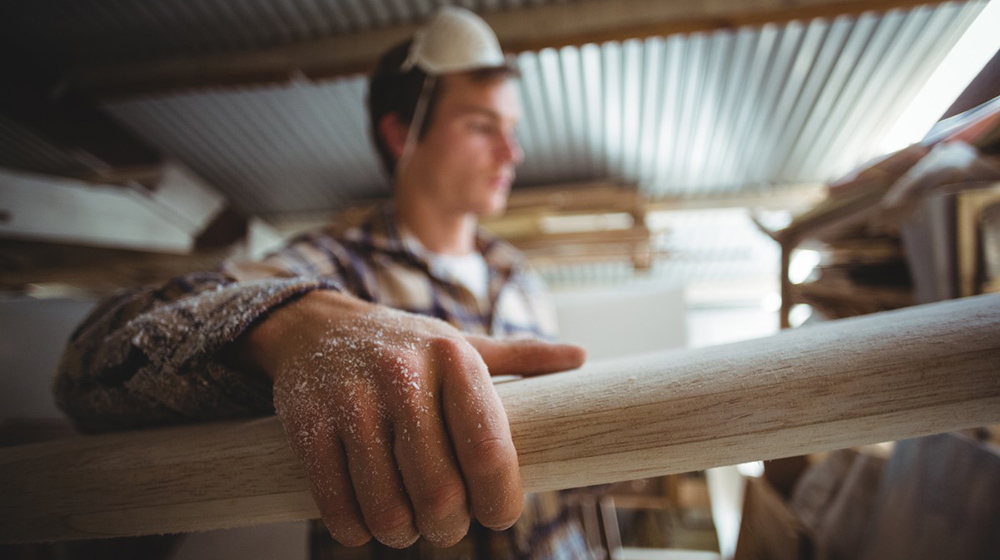
Fitness surf: 8 specific exercises for surfers
The art of surfing goes beyond gliding over the waves; it requires a dedicated training regimen and optimal physical condition, both on land and in the ocean.
Elite surfers require a unique combination of power, core strength, balance and coordination.
Performing fitness-type surfing exercises will strengthen specific areas of the body as long as a training plan designed specifically for the demands of the sport is followed.
Squats
Squats are a fundamental exercise that can make a difference in your surfing performance, strengthening key muscles and improving your stability and power. This exercise will not only improve your surfing technique, but will help with your posture and endurance.
Start by performing squats using only your body weight.
Perform 3 to 4 sets of 10 to 15 repetitions of each exercise. As you become familiar with the movement pattern, you can gradually introduce additional resistance. Increase your speed when ascending to develop power, always making sure to maintain proper technique.
It is important to maintain good form and do it correctly to avoid injury.
Pull-ups
Pull-ups are a key fitness surfing exercise to strengthen your upper body and improve your surfing performance by developing the strength to perform more powerful maneuvers and maintain better balance on the board.
Be sure to maintain good technique and control the movement with each repetition. If you are able to execute this exercise successfully, you will open up several possibilities to move towards more dynamic workouts.
As a surfer, proactive training is key. Spend time perfecting this drill, strengthen your body and then evolve into more dynamic and challenging movements.
It is not uncommon to see peak surfers missing opportunities to catch waves due to insufficient paddling ability. Develop upper body strength and mobility to be able to apply more power to each paddle. So perform 3 to 4 sets of 8 to 12 repetitions of each exercise.
Strides
Strides are excellent for strengthening the legs, improving balance and enhancing lower body power, which is crucial for surfers when paddling and performing maneuvers on the board.
Strides perfectly simulate the position of the hips and legs on a surfboard. The hip joints must have freedom of movement. Basic strides (also known as elongated squats) replicate the specific leg and hip movements present in surfing. So this exercise, with all its variations, attempts to simulate the movements on the board.
The stride also helps us to improve mobility, trunk stability and the ability to perform some maneuvers. Maintain good posture and control the movement with each repetition. Perform 3 to 4 sets of 12 to 15 repetitions of each exercise.
Push-ups
Push-ups are a fundamental exercise that can provide significant benefits for improving surfing performance. It works multiple muscle groups, including the chest muscles, shoulders, triceps and core muscles.
Having a strong upper body is essential for powerful paddles and maneuvers on the surfboard, making it a fundamental exercise in fitness surfing.
The strength generated through push-ups can be transferred to the upper extremities, thus improving the ability to paddle more effectively. This is essential for reaching the waves and positioning yourself correctly at the peak. Not only that, but doing push-ups regularly and correctly will help you stay away from any shoulder injuries.
In addition, push-ups, especially when performed in repeated sets, contribute to building endurance in the upper body muscles, which is one of the goals of fitness surfing. Good endurance is essential to maintain consistent performance during a prolonged wave session.
Once we have understood the proper technique for performing a push-up, we can start by performing as many repetitions as possible and gradually increase this number as our fitness improves. For an additional challenge, you can consider elevating your legs or adding weight on your back during push-ups.
Dive Bomb Push Up
Dive bomb push-ups are an advanced variation of push-ups that involve a more dynamic and extended movement. This exercise is very important as it simulates the "ducky" movement in surfing, which is when we want to go under the waves.
This exercise not only works the muscles of the arms and chest, but also involves the central area of the body, the back and improves flexibility. Be sure to perform this movement in a controlled manner and gradually increase the intensity according to your fitness level.
How is it done? Start by spreading your legs apart and positioning your hands on either side of your head. Raise your buttocks and gradually start bending your spine, starting with the cervical region, followed by the thoracic and finally the lumbar. Conclude by keeping the torso upright and the buttocks as close to the floor as possible.
Planks
Planks are a highly beneficial exercise for surfers, as they strengthen the core, shoulders and stabilizing muscles, which contributes significantly to improve surfing performance. By regularly practicing planks, we will be able to significantly increase the strength in the central area of the body.
To perform a conventional plank, it is essential to maintain a straight alignment from head to heels. Rest your toes and elbows with your forearms on the floor, making sure your elbows are in line with your shoulders.
The exercise involves contracting your abdominal muscles for several seconds. You can perform up to 8 sets, each of 60 seconds, with 20-second pauses between each set.
Apnea
Apnea, or breath holding, is an exercise in fitness surfing that can provide specific benefits for surfers by improving lung capacity and oxygen management.
Apnea involves holding your breath for specific periods of time, which can increase lung capacity. Increased lung capacity can be beneficial when dealing with situations where it is necessary to hold your breath, such as being caught underwater during a fall or when executing maneuvers under the wave.
Freediving can also contribute to stress and anxiety management. In surfing, staying calm and controlling your breathing is critical, especially in challenging conditions. Remember that freediving, like any exercise, should be incorporated gradually and adapted to your level of fitness and experience.
Yoga
Yoga is an excellent and complementary exercise to improve surfing performance. This ancient practice not only strengthens the body, but also improves flexibility, balance, and the mind-body connection.
Yoga postures work on flexibility, especially in key areas such as the back, shoulders and hips. This can improve the ability to perform wide movements and maneuvers on the surfboard. It also emphasizes balance and stability in many postures. These aspects are critical to staying on the surfboard and performing maneuvers with precision.
Integrating yoga into your training routine can be a valuable component in improving both physical and mental fitness for surfing. In addition, it can be an excellent way to prevent injuries and improve longevity in the sport.
Do not forget that whenever we are going to do fitness surfing to strengthen our muscles in order to improve our physical shape in the waves, it is important to warm up beforehand.













_v2.svg)
_v2.svg)









_v2.svg)


